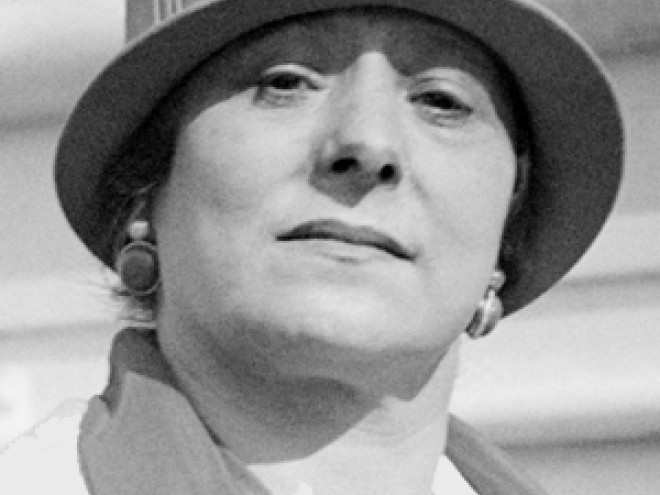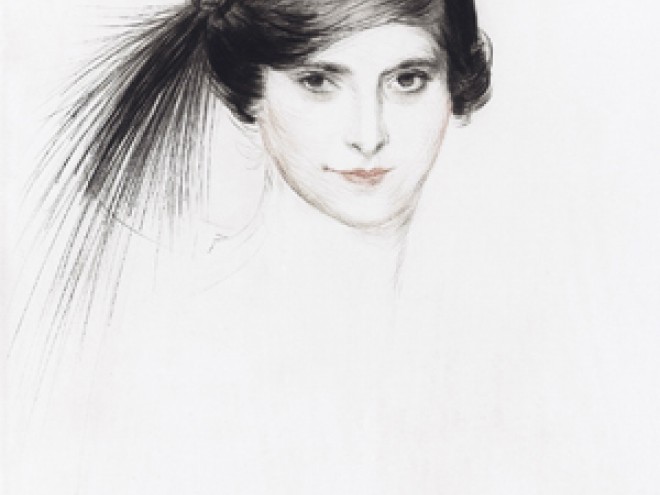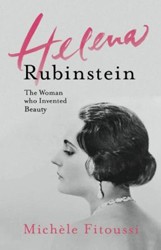Earlier this week, Michèle Fitoussi wrote about her fascination with Helena Rubinstein and her decision to write the biography Helena Rubinstein: The Woman Who Invented Beauty. Today she discusses the sources she used to write the biography. She will be blogging here all week for Jewish Book Council and MyJewishLearning.
Helena Rubinstein wrote – or rather commissioned – two autobiographies that merely serve to perpetuate her legend, and therefore cannot really be trusted… But they are enough to get a good idea of his extraordinary woman. There are also a couple of biographies written about her, as well as the memoir of Patrick O’Higgins, her secretary during the last 20 years of her life. His words are at times rather biting – it must be said she didn’t treat him especially well – but he remains affectionate, which make this account worthwhile.
In Paris, I had access to the numerous archives of the Rubinstein company; I was able to sift through 14 boxes of memories – Dora Maar’s photos of Helena’s apartment in Paris by the Quai de Béthune, newspaper clippings, press files, transcriptions of radio interviews, reports of the branding strategy in the 1950s, and hundreds of photos.
Once in New York, I had the opportunity to visit the Foundation before it closed its doors and auctioned off its collection of paintings. She had had her portraits done by Salvador Dali, Marie Laurencin, Jacques Helleu, Christian Bérard. Helena’s son’s daughter-in-law Suzanne Slesin also had a great collection of archives which she has compiled in a beautiful book entitled Helena Rubinstein: Over the Top. I met her on several occasions and she told me about her fascinating encounter with Madame Rubinstein in the ’60s, when she was only 16 years old, and how dazzled she was upon her visit to Helena’s apartment on Park Avenue. It was at once baroque and a complete mess – a little ‘over the top’ at times – but her style was unbelievably audacious, as she combined for example “Negro art” with contemporary furniture in a way no one would ever dreamed of doing at the time.
I spoke with some of her rare family members who are still alive, including a young cousin who escaped the Shoah with her mother and whom Madame took in after the war and the son of her director in France, Emmanuel Ameisen, who was also her first husband’s nephew.
Trawling through the genealogy sites online I managed to find identity papers, passports, and many newspapers of the time, both American and Australian. Her career truly began in Australia, that’s where her first interviews were conducted, her first adverts placed. One of which I found was dated back to 1903, featuring an actress praising Helena’s ‘Valaze’ cream – the true precursor to ‘Because I’m worth it.’
I would have liked to learn more about her first husband Arthur Ameisen, who went under the alias of Edward Titus, an intellectual, journalist, and art lover, who set up the bookshop on Delambre street in Montparnasse and published Kiki’s Memoirs by Kiki de Montparnasse as well as the French translation of Lady Chatterley’s Lover. He too was a fascinating character. He was a prominent member of the ‘Roaring Twenties’ crowd, and influenced his wife’s artistic taste to a great extent. But what was he up to before they met in Australia and then got married in London? I had the opportunity to meet his second wife in Cannes, Erica, who was 38 years his junior, but sadly she was suffering from Alzheimer’s, and I was unable to glean much information from her.
Michèle Fitoussi was born in Tunisia to French parents, and has lived in Paris since the age of five. She worked as a journalist at Elle magazine for years, interviewing world leaders in areas as varied as politics, human sciences, sports, literature and the media. She is the author of screenplays, fiction and non-fiction, including the international bestsellersSuperwoman’s had Enough and The Prisoner. She also co-wrote Stolen Liveswith Malika Oufkir, which sold more than a million copies throughout the world and remained on the New York Times best-seller list for 25 weeks after being stamped as an “Oprah Book” by Oprah Winfrey. Her newest book, Helena Rubinstein: The Woman Who Invented Beauty, is now available. Her forthcoming book about the 2008 terrorist attacks in Mumbai will be published in France this September.
Related Content:
- Essays: The Research
- Gerald Stern on “Writing Biography: The Historian’s Challenge”
- Essays: An Artistic Eye
Michèle Fitoussi was born in Tunisia to French parents, and has lived in Paris since the age of five. She worked as a journalist at Elle magazine for years, interviewing world leaders in areas as varied as politics, human sciences, sports, literature and the media. She is the author of screenplays, fiction and non-fiction, including the international bestsellers Superwoman’s had Enough and The Prisoner. She also co-wrote Stolen Lives with Malika Oufkir, which sold more than a million copies throughout the world and remained on the New York Times best-seller list for 25 weeks after being stamped as an “Oprah Book” by Oprah Winfrey. Her newest book, Helena Rubinstein: The Woman Who Invented Beauty, is now available. Her forthcoming book about the 2008 terrorist attacks in Mumbai will be published in France this September.
On Writing a Biography of Helena Rubinstein
On Trailing the Life of Helena Rubinstein
Michèle Fitoussi’s Favorite Episodes in Helena Rubinstein’s Biography



